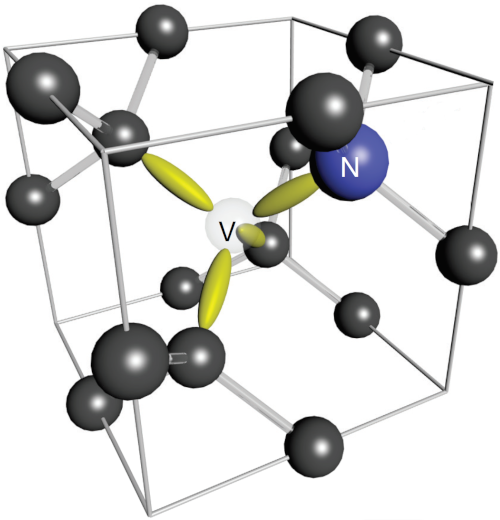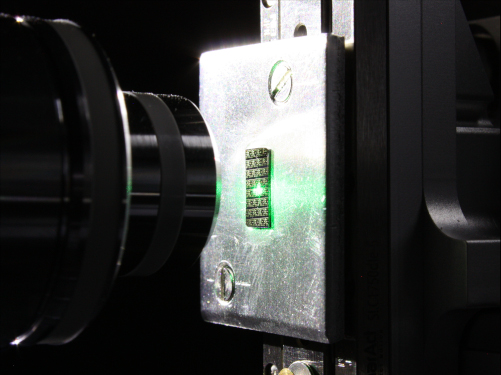Molecular Quantum Opto-Spintronics
↵
Quantum emitter based magnetometry
 |
Vacancy centers in diamond are emerging as powerful quantum elements for various technologies, such as computing, sensing, and communication. Their single emitter quality and distinguished electronic and nuclear spin properties make them a remarkable tool for many quantum technological applications both at room and cryogenic temperatures. The most prominent member of this vast group of crystallographic defects in diamond is the nitrogen vacancy (NV) center, which turned out to be a versatile and nicely controllable solid-state quantum system. We exploit these atomic-like characteristics to detect and measure extremely weak fields originating from molecular spins. For this reason, we are currently setting up two NV center based magnetometry setups to measure crystals of magnetic molecules and even single-molecule magnets. One setup is a standard scanning confocal microscope at ambient conditions, the second a fiber-based scanning confocal microscope inside a table-top dilution refrigerator with 20 mK base-temperature. |
Molecular fluorescence spectroscopy
We aim to use fluorescent probes which are directly attached to the qubit molecule. The immediate proximity and chemical bonding enable an interaction between the fluorescent ligands and its central magnetic core. Hereby, the qubit spin state can be mapped on the optically detected signal of the fluorescent ligand. Fluorescence spectroscopy on molecular ensembles is a common analysis technique to get an insight in the molecular structure and interactions. As single molecule experiments are one main focus, we also perform single-molecule spectroscopy to study single entities in the absence of inhomogeneous broadening. Based on the spectroscopical analysis we are able to pick a designed molecular compound which is suited for the integration into opto-spintronic devices. |
 |
Light interaction with molecular devices
 |
To receive a spin-transistor, we place a single-molecule magnet in a nanometer sized gap between two gold junctions. The ligands of the molecule are tunnel coupled to the junctions, enabeling to address the molecule electronically. Additional local electrodes further allow the application of fast gate pulses and microwave electric fields, which influence to the spin system via the Stark effect. Moreover, choosing fluorescent ligands enables us to address the qubit optically. Besides a connection of the molecule, the gold junctions enhance the light-matter interaction based on the electromagnetic boundary conditions and the excitation of surface plasmons. The stronger light-matter interaction gives rise to optical techniques such as surface enhanced fluorescence and surface enhanced Raman scattering. |


